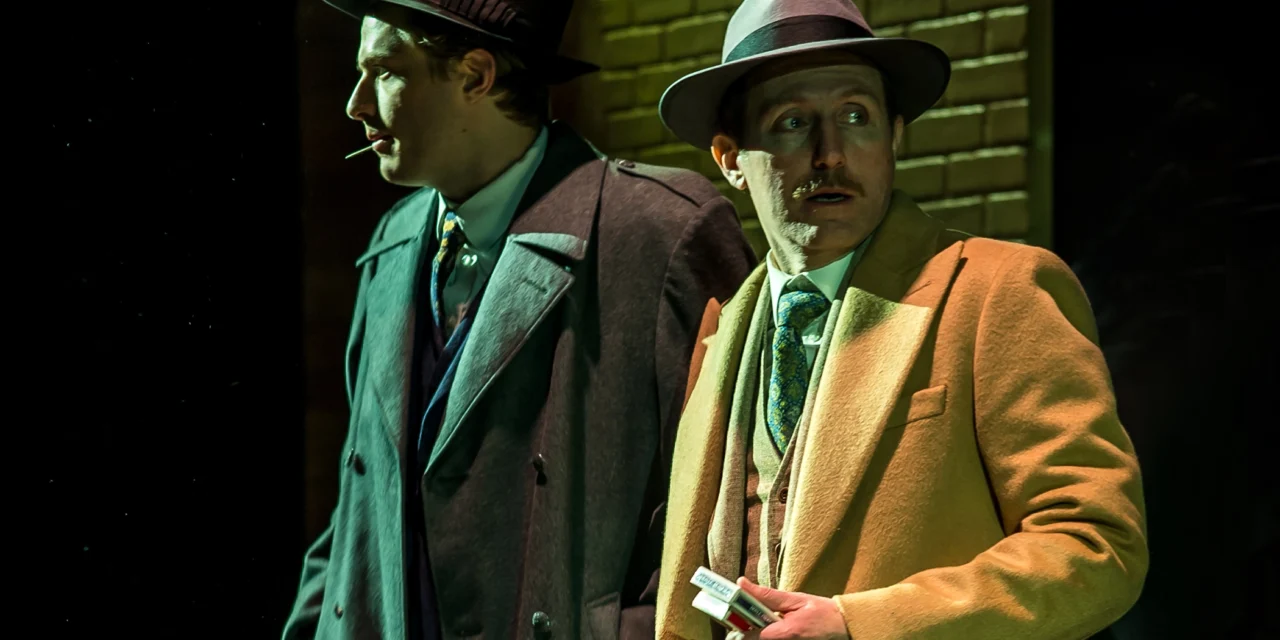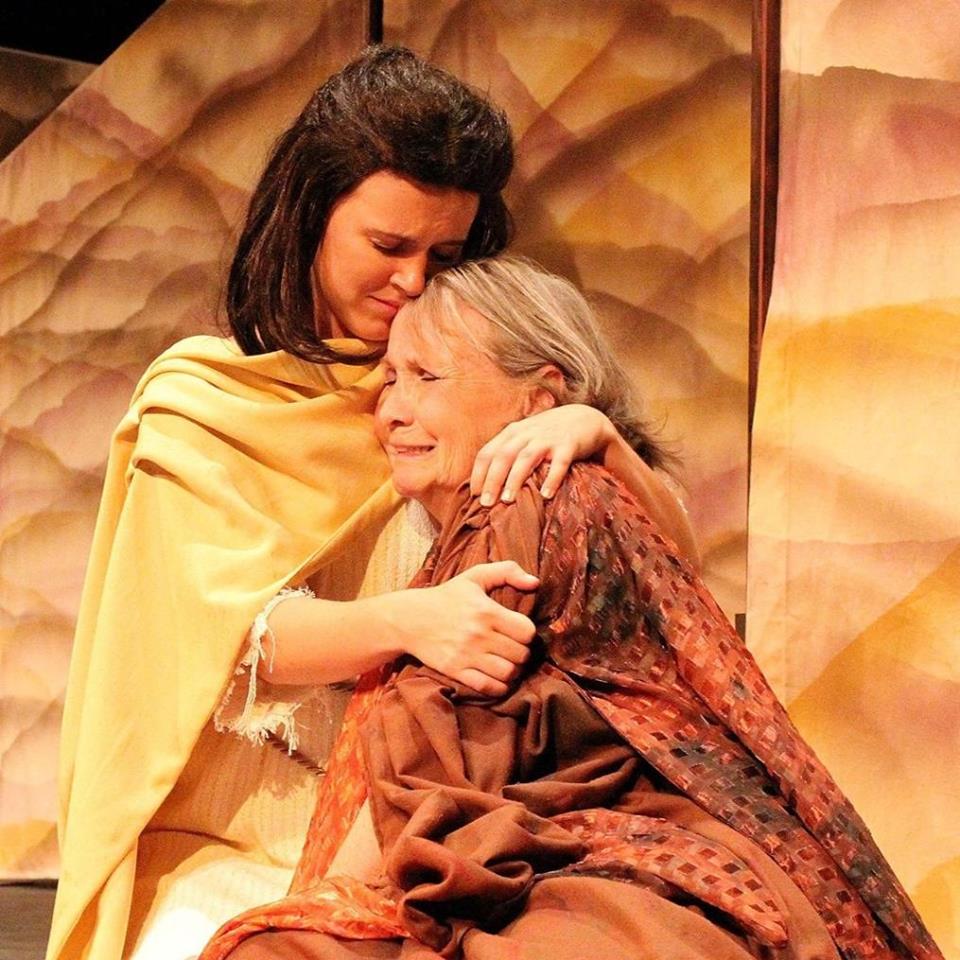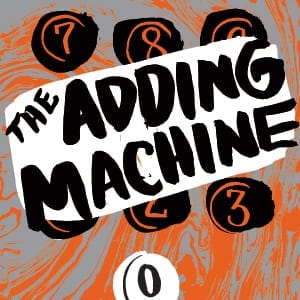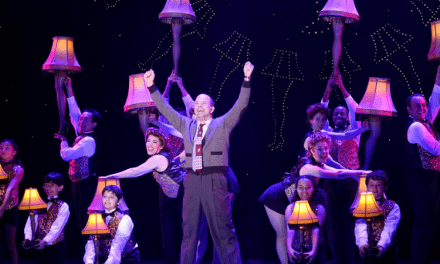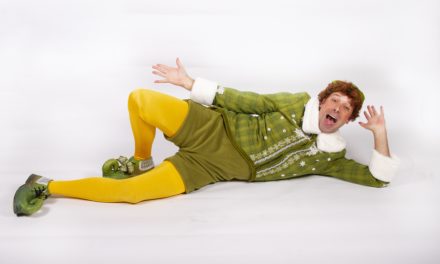SOUTH SALT LAKE — The Sting, the lesser known 1983 stage play written by David S. Ward, is adapted from the famous classic 1973 Robert Redford and Paul Newman film, also by Ward. The play is set in 1936 and is a perfect fit for the Parker Theatre mainstage. Beautifully renovated in 1930s Art Deco style, it feels like you’re walking into the world of the film the minute you step through the theatre’s front doors.
If you arrive early enough you can even stop in the connected soda shop next door and feel like you’ve gone back in time, while you sip something sweet. Stepping into the theatre itself, the beautiful Art Deco details continue. I’ve always loved the gorgeous yellow velvet main curtain at the Parker. I especially love that the curtain is used as a screen, on which to project stunning patterns reflective of each production before and after the show. The curtain projection for The Sting did not disappoint with a stunning and classy 1930s green radiant motif, with ragtime music playing throughout the space.
Directed by Joanne Parker, the production is a love letter to the film and it is quickly apparent that the script follows the film almost exactly, and actors even embody much the same mannerisms of the film, down to the toothpick always in Johnny Hooker’s mouth (played by Spencer Hohl at Parker and Redford in the film). The plot unfolds as the conman Hooker and Gondorff work with their crew to con mob boss Doyle Lonnegan with a complicated scheme. The curtain rises and we are greeted with a classic styled stage design by James B. Parker featuring staggered leg drops outfitted with facades of various light colored material such as white brick and light paneling.
Eventually at the far upstage a platform is revealed behind what appear to be light rail supports and the upstage wall of the space is used to project historic scenes of Chicago. At first the projections seemed unnecessary and even a bit distracting, but as the show progressed, the convention settled in and I found they really contributed to the ambiance of the production.

The Sting closes at the Parker Theatre on May 3rd, 2025. Photo by Lauri Baird.
Joanne Parker’s smart direction fully and efficiently utilizes the space. I appreciate when a director doesn’t limit a show’s footprint to the downstage area. In fact, various moments break through the proscenium and take place in and around the audience—in the entrance doors, up the stairways and even in the theatre’s tiny balcony. Such moments really draw the audience into the world of the play. Parker also masters fun and smooth scene transitions—and if you’ve seen the film, you can imagine just how many quick transitions of time and place are required for this production.
The transitions are swift but unhurried and the actors moving set pieces on and off do so in character while chattering or beginning the scene, or even bopping along to the scene change music. Such whimsy makes the scene changes nearly as interesting as the scenes themselves—the transitions into the complex wire room set up are particularly delightful. The short barber and soda fountain scenes are funny and well done.
Another well-worn, though entertaining bit of direction are the various chase scenes across the stage, in and out of the different wings, especially the chases that occur in the rain and in the dark, creating exquisite silhouettes. The only drawback in the direction is the pacing. The show feels slow. It’s a little over two hours in total, but it drags quite a bit in some scenes—especially those heavy in dialogue and light on action, like the planning scene–and could use some general tightening up.
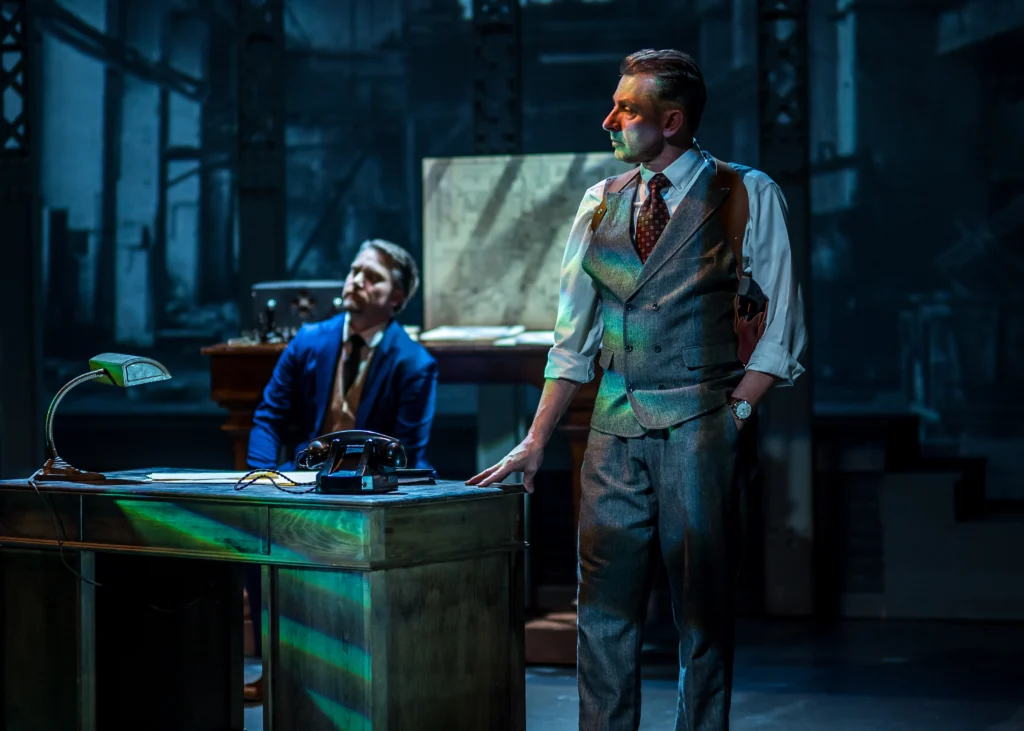
Photo from The Sting at the Parker Theatre. Photo by Lauri Baird.
The program does not list a fight director though Hohl, who is also the company’s Artistic Director, is referenced as a certified fight choreographer. I imagine he had a part in the really well done, though brief, fight sequences. Of note is the first time Detective Snyder, played by Duane Stephens, has a run in and physical altercation with Hooker. Stephens is in fact quite adroit with the character of Snyder. His mannerisms, facial expressions and general embodiment of the stereotyped “flatfoot” are excellent.
Roger Dunbar as Henry Gondorff, and Spencer Hohl as Johnny Hooker are both strong leads, filling the big shoes of Newman and Redford. I’d forgotten how the movie ends, so it was fun to be surprised by the ability of these two to pull a big grift on the audience at the end. Other standouts in the cast are Mackenzie Pederson who plays Billie with a smoky sensuality and savviness that is befitting the character, and Brinton Wilkins as Luther is believable, and affable. A nod to Emily Parker Holmgren’s hilarious caricature bit of the secretary Miss Richman is also in order. Generally the dialects through the production are fairly solid and fun, if sometimes inconsistent. This inconsistency was subtle enough that I struggle to pinpoint specific characters in specific scenes needing work, but it was noticeable enough that the whole production could use just a bit more dialect work. This is likely something that will improve as they settle into the run. The show sports a large and capable ensemble cast that works well together, and is impressive in their ability to move from character to character throughout the production.
The technical attention to detail is excellently done. James B. Parker’s set and lighting design is outstanding. From the myriad of period appropriate light fixtures that fly in and out, setting each scene, to the realistic rain projection. The costumes by Rebecca L. Fenton are fantastic, with several notable pieces such as the stunning blue velvet dress that clings to Billie’s curves, and Floyd’s red suit and matching red wingtips. Every detail is specific, and appropriate. With such a strong show, you won’t want to be stung by missing The Sting.

These reviews are made possible by a grant from the Salt Lake County Zoo, Arts, and Parks program.

